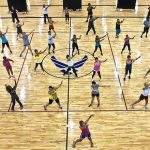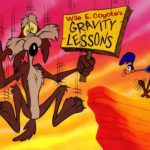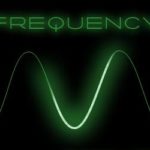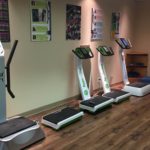The Convincing Case For Higher G’s In Vibration Training
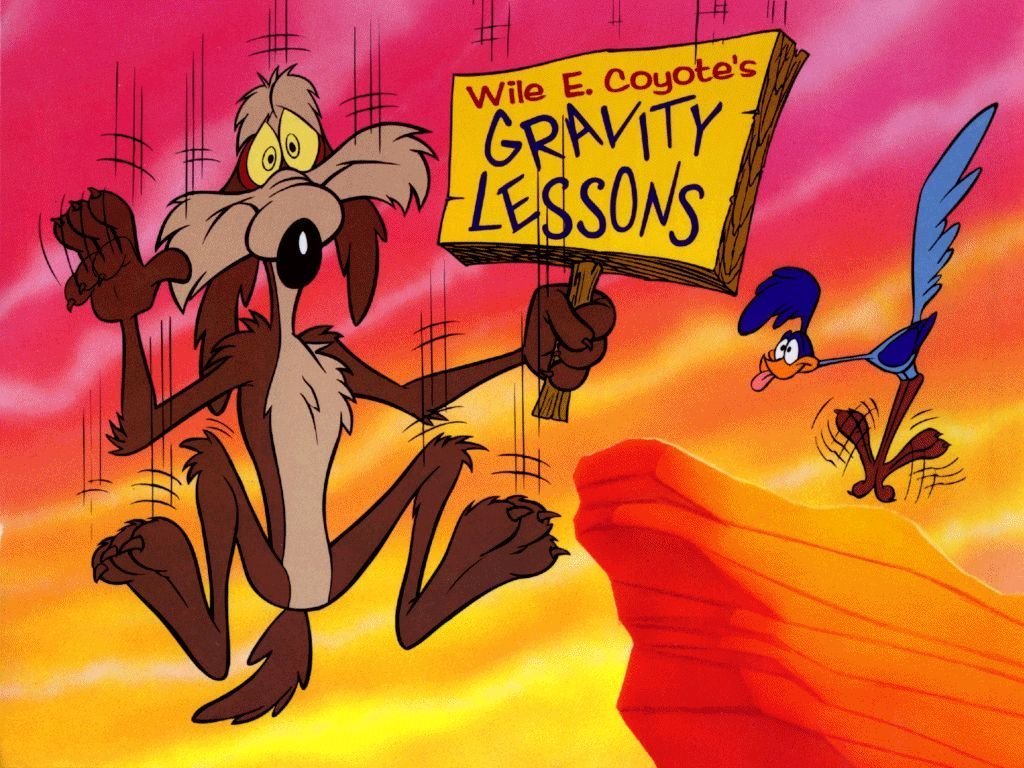
Prelude – part of the reason for confusion and controversy over the importance of high G’s in vibration training is really a matter of economics – not science. The fact is, most commercially available vibration machines are not capable of producing high G’s. False machine specifications and misleading marketing have caused some to believe high G’s don’t work or aren’t necessary.
See the article Why The Best Vibration Machines Are Heavier, Noisier and Hungrier for more info.
Gravity and Health
Gravity is what pulls you down to the Earth, keeping you stuck to the planet instead of floating off into space; like a magnet pulling a piece of metal towards itself.
It is becoming increasingly evident that Gravity is vital for health. To keep you stuck to the planet, it exerts a downward Gravity force or ‘G-force’ on your body which stimulates your muscles, bones, nerves, cardiovascular and hormonal systems.
As Astronauts have found out, to maintain health all these systems must receive a certain kind of stimulus that only gravity can provide. For example, see what Dr. Joan Vernikos of NASA has to say about Astronauts being in microgravity:
“Despite strenuous exercise in space, for several hours every day, loss in bone, muscle, and cardiovascular function happens ten times faster in space than on Earth. Exercise without gravity is not as effective.”
Another way that humans can reduce the stimulus of gravity on their bodies is to sit or lie down. Dr. Vernikos has amassed convincing evidence that the effects of sitting or lying down are the same as being in microgravity and whether you spend all day sitting or floating around in space, the result of avoiding Gravity is the same: ‘accelerated aging’.
In fact, without a suitable gravity substitute, Astronauts would eventually become so weak that they would not survive the return journey to Earth; dying from the complications of broken bones and cardiovascular failure.
Can’t You Just Take A Gravity Pill?
Surprisingly, it seems the answer may be YES though the Gravity supplement is not in the form of a pill but rather, using Whole Body Vibration. Due to the failure of exercises like stationary cycling to keep Astronauts healthy during space travel, scientists from the European Space Agency have turned to Whole Body Vibration and are finding for the first time that they can provide enough stimulus to the body to keep Astronauts’ bones, muscles and blood vessels as healthy as they were before leaving Earth. What they have found however is that it takes high intensity or High-G vibration training to be optimally effective.
Higher G’s Produce Greater Training Outcomes
Consider the following from a pioneer of Whole Body Vibration research Professor Bosco (1):
“Gravity normally provides the major portion of the mechanical stimulus responsible for the development of muscle n everyday life and training. It should be remembered, that specific programs for strength and power employ exercises with fast, abrupt variations of G-force. Therefore, simulation of hypergravity (wearing vests with extra loads) has been utilized for improving explosive muscle power. On the other hand, changes of gravitational conditions can be produced also by mechanical vibrations applied to the whole body.”
In other words, like training with weights, Whole Body Vibration can be an effective way to artificially increase G-forces on the body and get the same benefits.
It is apparent from the research that G-force doesn’t decide every benefit but it may determine most. And of course, if you are frail, injured, or just starting exercise, low G’s may be fine, to begin with. To define “greater outcomes” in this article, I’m assuming you are uninjured, past the beginner stage, and interested in getting stronger, losing weight, or surviving a flight to Mars!
For some background understanding of why increased G’s should produce the best results, review How Whole Body Vibration Works In Simple Terms before going on to explore the “evidence”.
Vibration Training Research and G-force
In the early years, the focus of most research was “Does Whole Body Vibration work?” Mounting scientific evidence concluded “Yes”. So the focus became “How does it work?” In the years since investigating changes in frequency and/or amplitude (therefore changes in G-force) have produced results that improve when G force is increased. The following brief review showcases some examples.
Oxygen uptake
One of the earliest indications of greater effect from increased G-force was a study by
Rittweger measured oxygen uptake during Whole Body Vibration exercise (2). Oxygen uptake is an accepted method for measuring the calories burned during a particular activity. They compared oxygen updates under various vibration conditions, including the addition of even more load by having the subjects wear a weighted vest.
The Results
★ Increasing G’s by increasing frequency from 18 to 34Hz resulted in increased oxygen uptake.
★ Increasing G’s by increasing amplitude from 2.5 to 7.5mm resulted in increased oxygen
uptake.
★ Increasing G’s by adding a weighted vest resulted in increased oxygen uptake.
In other words,f the key to burning more calories with vibration training is using more G’s.
Perceived Exertion
Another accepted method for determining calories burned, is perceived exertion using the Borg Rating of Perceived Exertion (RPE) scale. It’s a measure of how hard you feel you are working based on sensations such as increased heart rate, respiration, sweating, and muscle fatigue.
Marín devised a similar method for measuring perceived exertion during vibration training known as the OMNI-Vibration exercise scale.
STUDY 1. Marín reviewed other experiments in which an increase in frequency or amplitude increased perceived exertion so he theorized that perceived exertion would increase with increases in acceleration.
The Results
He tested accelerations from 1.3G up to 9G. The participants rated their exertion in increasing fashion as the acceleration increased from ‘below easy’ at 1.3G to ‘somewhat hard’ at 9G. This indicates that the most calories were burned when the acceleration or G-force was highest (3).
STUDY 2.
Since the acceleration can be increased by altering either the frequency or the
amplitude, how was Marin to know whether altering one would have more of an effect than the other. ie. what was more relevant, frequency, amplitude, or did it not matter how you arrived at a higher g-force?
To find out, he devised a new study where the acceleration remained fixed at 4G’s but in one group it was achieved with 30Hz and 2.5mm and in the other with 46Hz and 1.1mm. The expectation was that amount of g-force was what mattered most, not how it was achieved.
The Results
As expected the perceived exertion did not differ between the two groups. The overall acceleration was the key, not the individual frequency or amplitude (4). As a result, Marin concluded:
“According to this data, we can speculate that acceleration is the most important parameter to increase global neuromuscular activation”
Electromyography
Electromyography (EMG) is a technique for evaluating and recording the electrical activity produced by skeletal muscles. It involves attaching skin-mounted sensors via electrodes to a processor to record the data. The data can be analyzed to detect muscle activation level, where greater EMG signal equals greater muscular activation. In the perceived exertion study by Marin et al. a significant correlation was found between acceleration, perceived exertion, and EMG signal. When acceleration was increased, so too were the perceived exertion and the EMG signal.
The following studies have shown greater EMG signal via greater acceleration:
Indirect Comparison of Low G-force and High G-force Vibration
In the beginning when the research focus was “does it work?” and then “how does it work?” most experiments investigated the effect of vibration vs. no-vibration.
For example, a 2010 meta-analysis by Marín et al. reviewed a large sample of existing research and found an increase in effect size for chronic strength gains from an increase in both frequency and amplitude. As we now know, whether you increase frequency or amplitude, the result is increased acceleration or ‘gravitational loading’. So, while it was only indirectly investigating acceleration it supports what we’ve looked at so far: more acceleration = more results.
Direct Comparison of Low G-force and High G-force Vibration
As the research now makes its transition to “what works best?” there are a growing number of studies that investigate G-force directly. The following studies directly compare the effect of lower G’s vs. higher G’s. Unsurprisingly they also reveal more G-force = better results.
Summary
Gravity and sufficient exposure to G-force are critical for the maintenance and restoration of health.
The case for using higher G’s for vibration training is supported by a large amount of scientific evidence such as:
★ Oxygen uptake – increasing G-force increases energy consumption
★ Perceived exertion – increasing G-force increases exercise intensity
★ Electromyography – increasing G-force increases muscle activation
★ Direct and Indirect Outcomes – increasing G-force increases various physiological effects
While low G-force is appropriate in some limited circumstances there is little to no evidence that low G-force produces better or even equivalent effects to high G-force. Logic and research evidence give convincing support of higher G’s being of paramount importance for vibration training outcomes.
References:
(1) Bosco C, Cardinale M, Tsarpela O, et al. The influence of whole body vibration on jumping performance. Biology of Sport. 1998;15(3):157-164.


